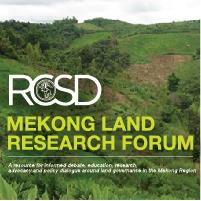Resource information
Rural areas in Cambodia have been the target of large-scale land acquisitions since the late 1990s. As of March 2012, economic land concessions in Cambodia covered more than 2 million hectares, equivalent to over half of the country’s arable land. In this paper, we discuss the policy narratives and discursive strategies that are employed by various actors to justify and legitimize large-scale land acquisitions. We then analyze the underlying mechanisms of such acquisitions and investments and examine how they are entangled with donor-assisted land use planning efforts. Finally, we explore local people’s strategies of resistance. Our findings suggest that the Cambodian ruling elite has enabled land grabbing through three major mechanisms: first, by establishing a form of ‘shadow governance’ and corrupting the legal culture; second, by discursively justifying expropriation and resettlement through emphasizing rural development, ecological restoration and poverty alleviation; third, by instrumentalizing donor-supported, pro-poor land allocation in the form of social land concessions towards legitimizing land grabbing and distributional injustices and minimizing opposition to land grabs among local communities. Local strategies of resistance have been desperate, sporadic and atomistic vis-à-vis the powerful coalition of government authorities, concessionaires and the military.


